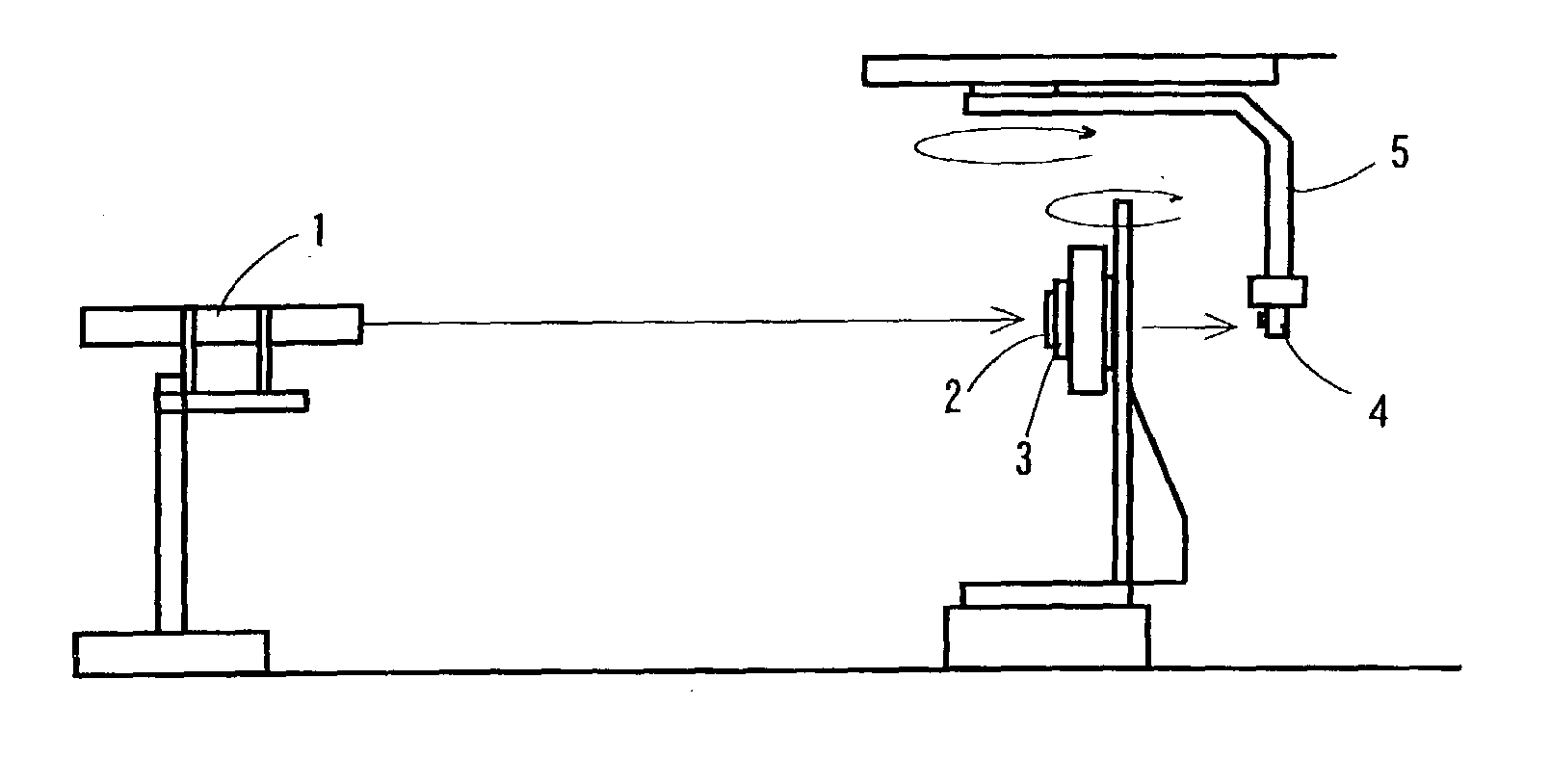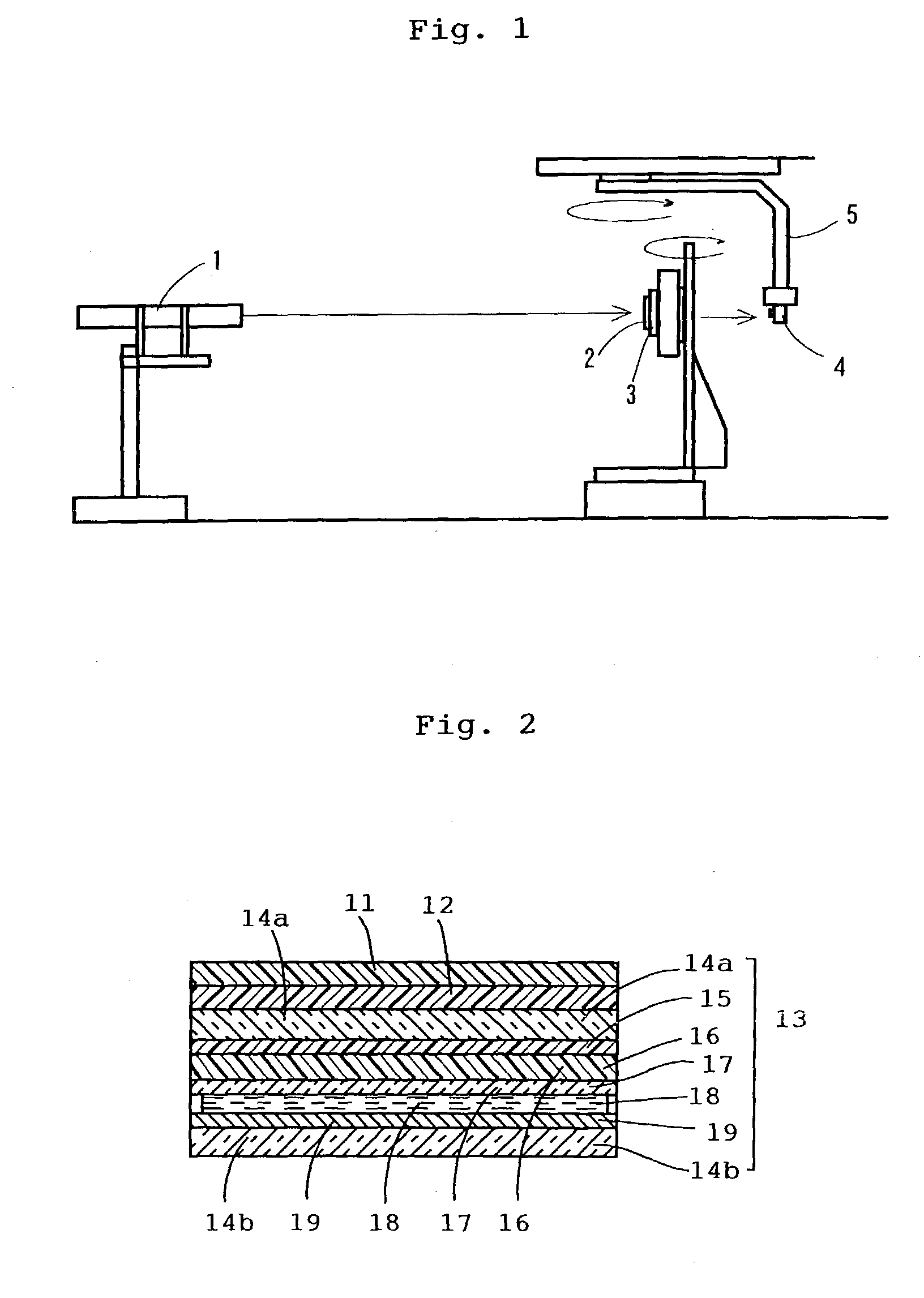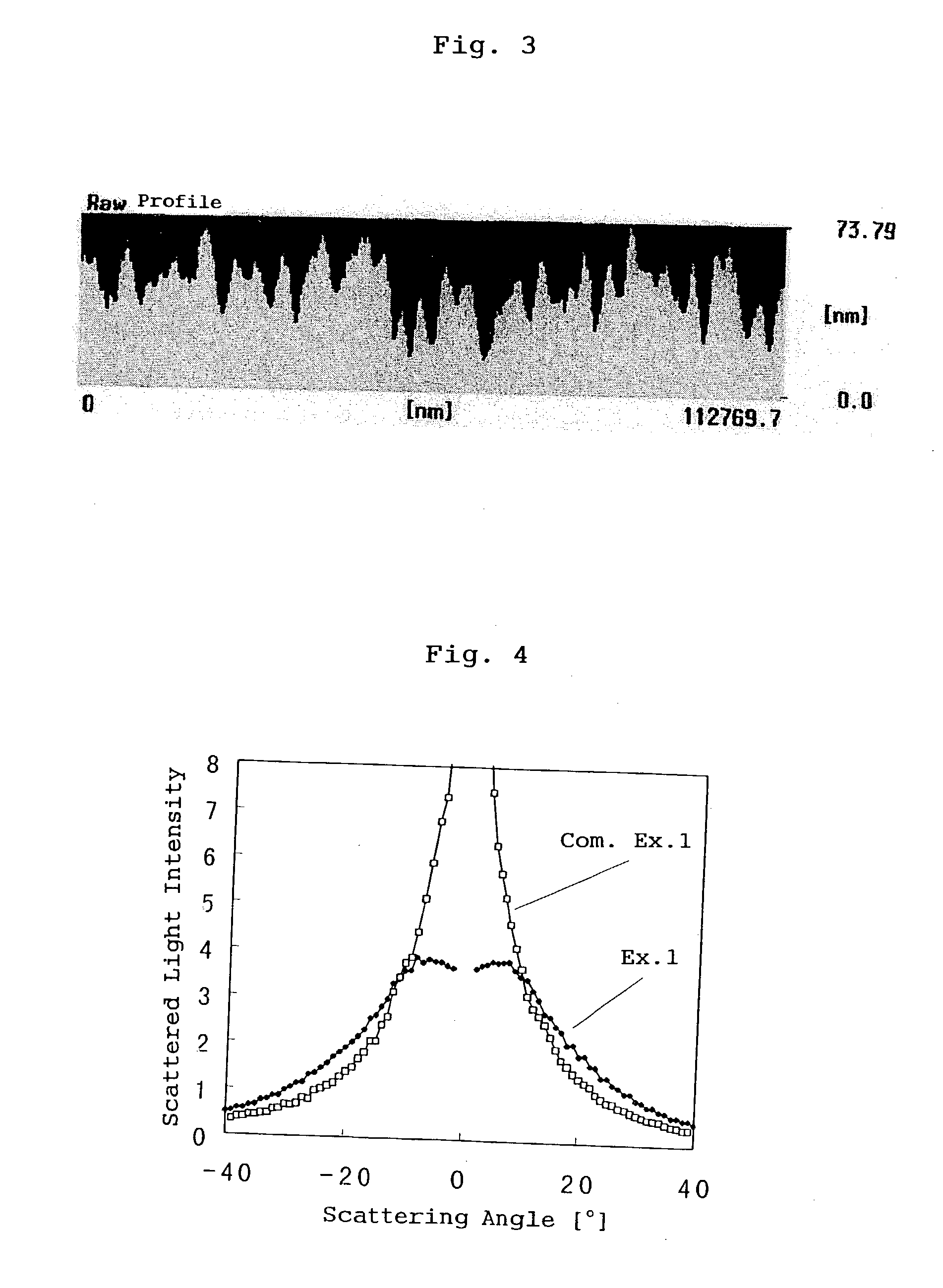Transmission light-diffusing layer
a technology of light-diffusing layer and light-diffusing layer, which is applied in the direction of optics, thin material handling, instruments, etc., can solve the problems of high cost, difficult lowering of production cost and quality stability, and inability to ghost and blur images on display surfaces, so as to improve visibility and high scattering and directivity , the effect of high surface smoothness
- Summary
- Abstract
- Description
- Claims
- Application Information
AI Technical Summary
Benefits of technology
Problems solved by technology
Method used
Image
Examples
example 1
[0072] In ethyl acetate were dissolved 63 parts by weight of a poly(methyl methacrylate) (PMMA, manufactured by Mitsubishi Rayon Co., Ltd., "BR-80") and 37 parts by weight of a styrene-acrylonitrile copolymer (SAN, manufactured by Technopolymer Co, Ltd., "290ZF") to prepare a 10% by weight of a resin solution. The resin solution was filtrated, and the filtrate was cast on a glass substrate 0.7 mm thick for a reflective liquid crystal display apparatus to form a transparent resin layer 12 .mu.m thick on the glass substrate. The substrate with the resin layer was subjected to thermal treatment in an oven at 220.degree. C. for 20 minutes. After thermal treatment, the glass substrate was allowed standing to cool spontaneously to form a clouded light-diffusing layer on the glass substrate. When examined with a transmission optical microscope, it was found that thus obtained light-diffusing layer had an intermediate structure between a bicontinuous phase structure and a droplet phase stru...
PUM
 Login to View More
Login to View More Abstract
Description
Claims
Application Information
 Login to View More
Login to View More - R&D
- Intellectual Property
- Life Sciences
- Materials
- Tech Scout
- Unparalleled Data Quality
- Higher Quality Content
- 60% Fewer Hallucinations
Browse by: Latest US Patents, China's latest patents, Technical Efficacy Thesaurus, Application Domain, Technology Topic, Popular Technical Reports.
© 2025 PatSnap. All rights reserved.Legal|Privacy policy|Modern Slavery Act Transparency Statement|Sitemap|About US| Contact US: help@patsnap.com



